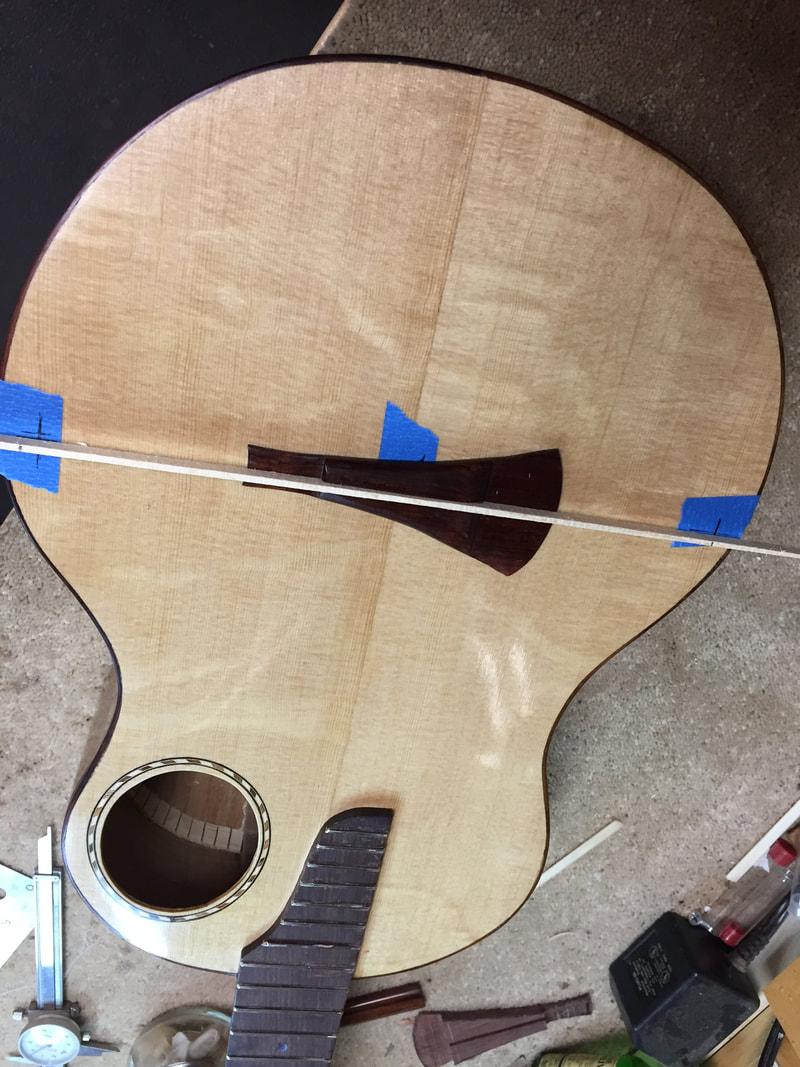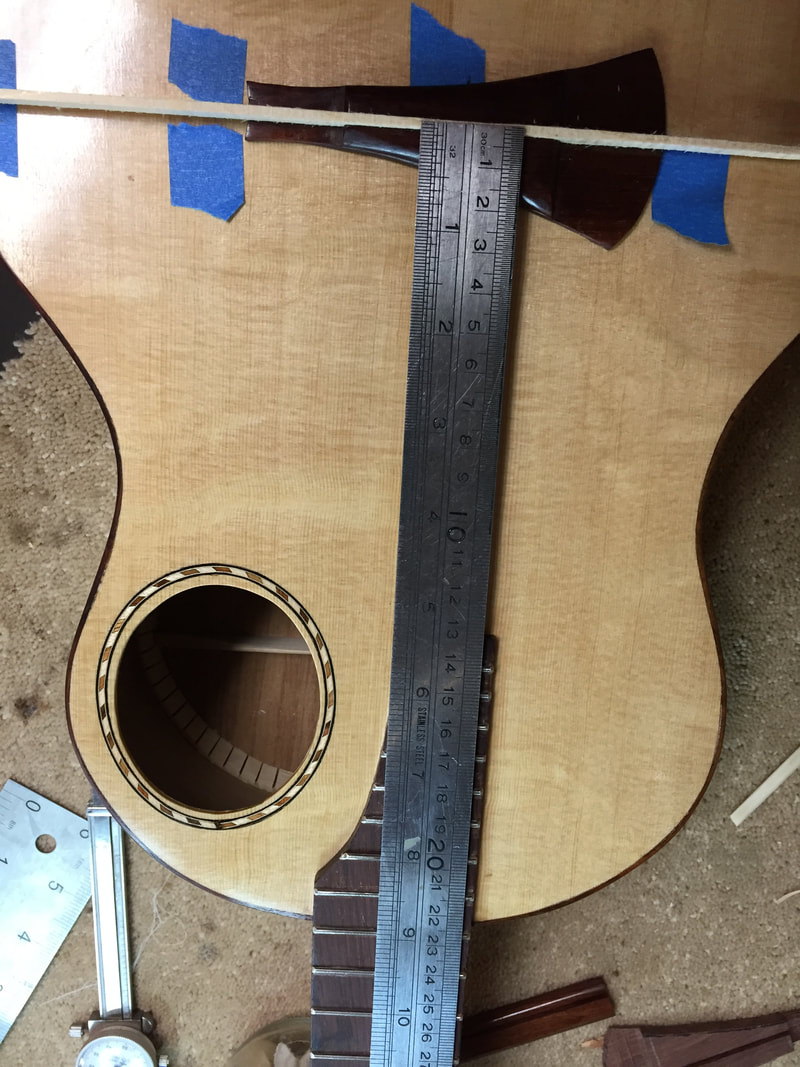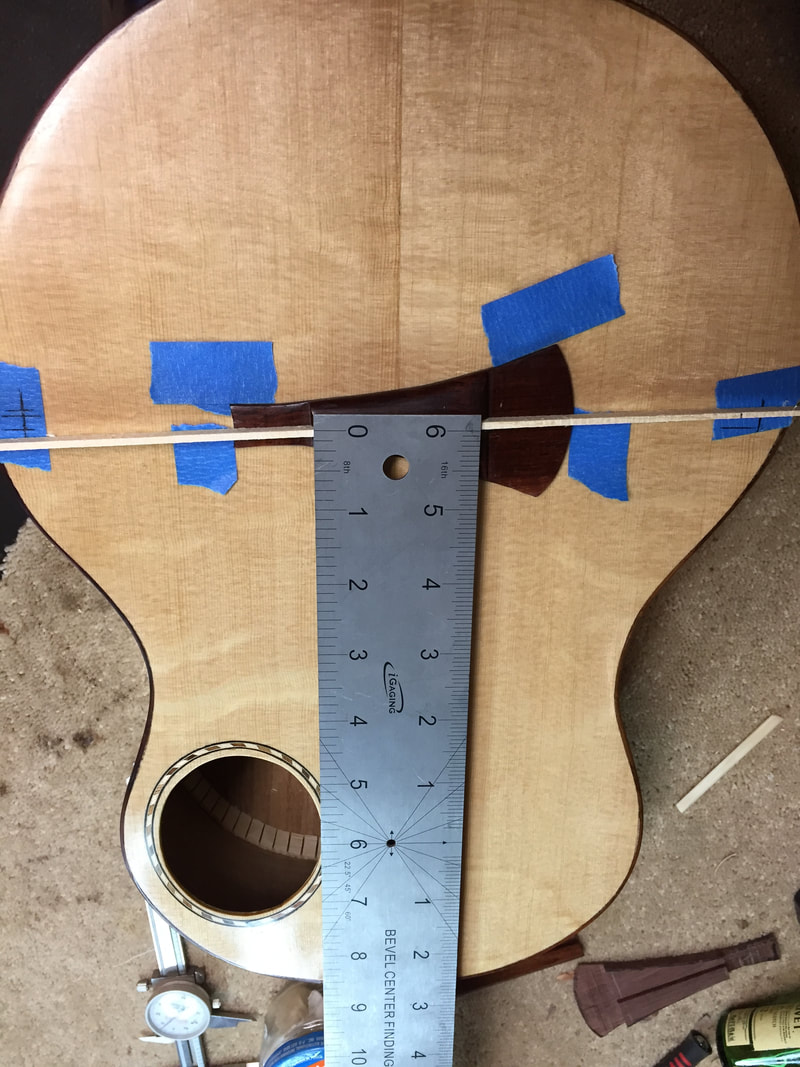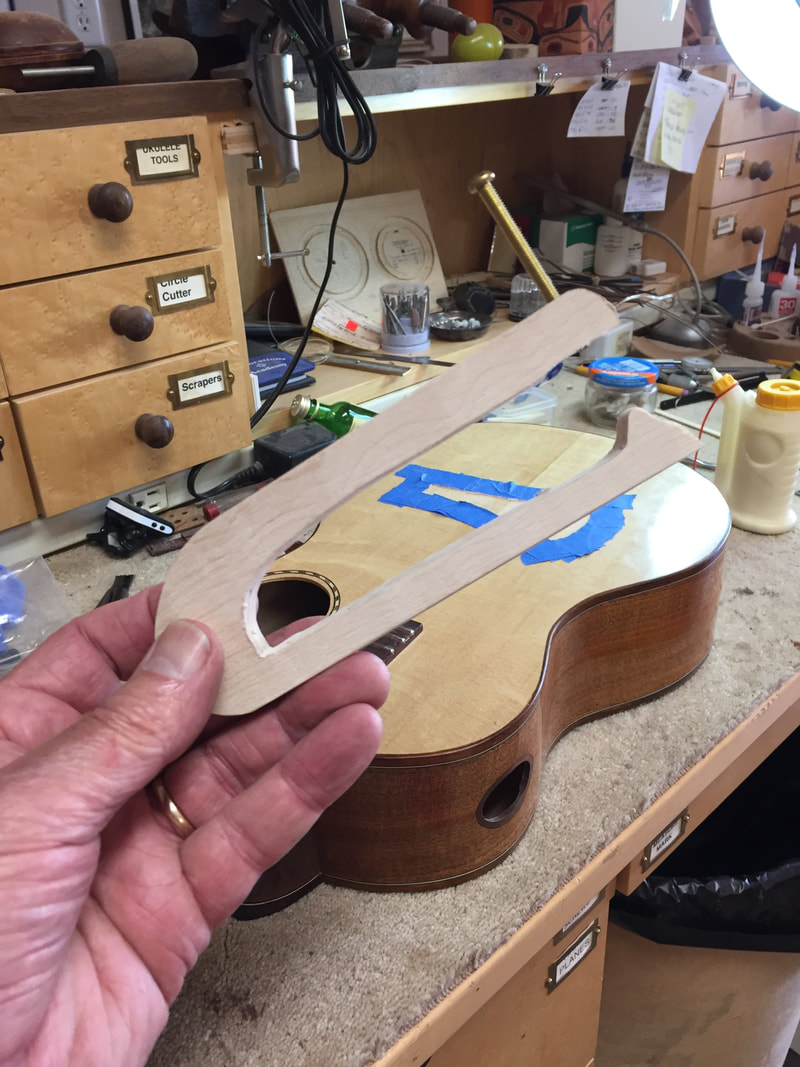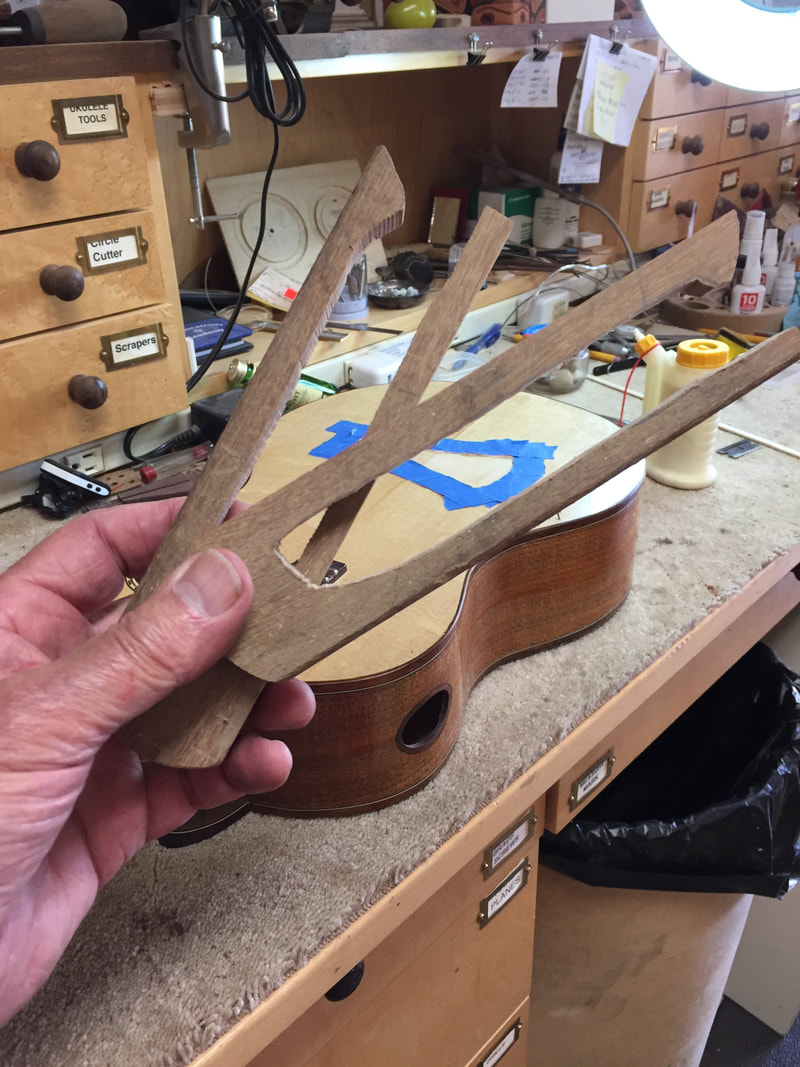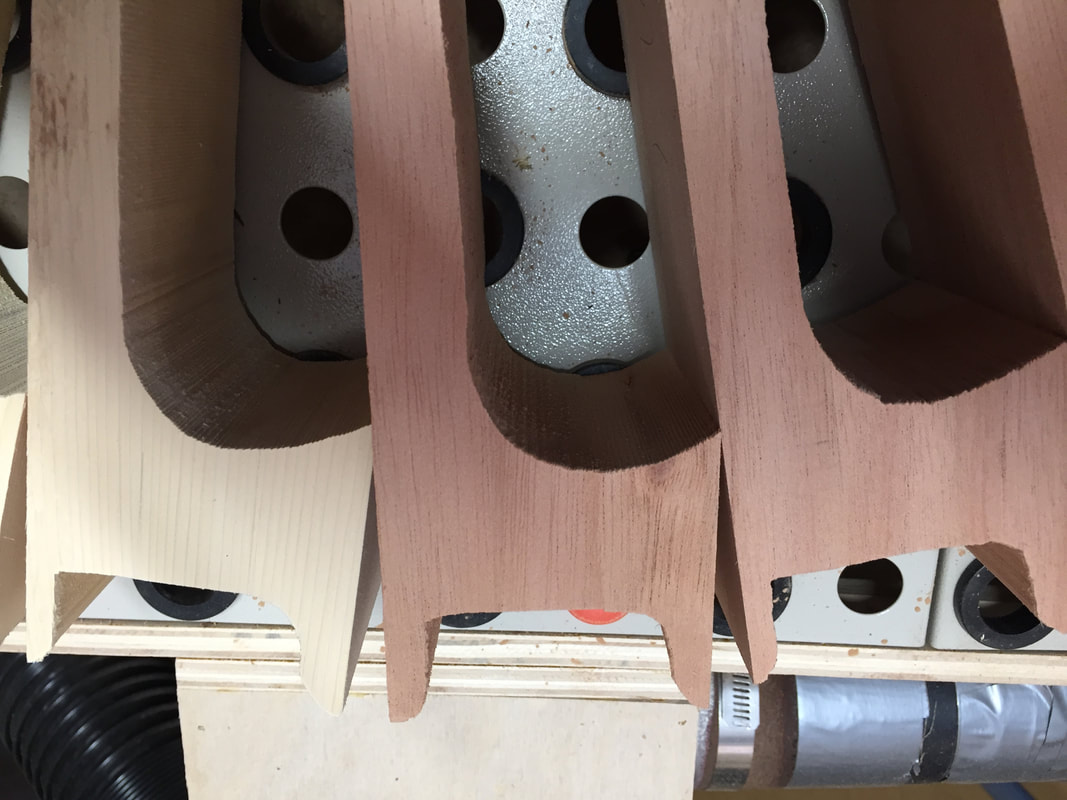The French Polish on the Baritone is done. it is time to glue on the bridge and get this thing strung up-but this is a bit challenging.
Getting the bridge set in the exact right spot took me a good hour today. The bridge is curved, the saddle wants to be set with a slight compensating decline to the left. The distance from the nut is critical for proper intonation. This is not easy.
But I finally got it right, and now it is time to tape the bridge in place and prepare for it's gluing.
Blue tape surrounds the bridge to hold it in the exact proper position and to mark off the area of the sound board that must be scraped clear of shellac so that the bridge can be glued on. Then I found that my homemade clamp used for the Kasha tenors would not stretch far enough for a baritone.
So now I have made a new pair of clamps, but I lack the hardware, so tomorrow I am off for the hardware store and I will get this bridge glued on. I got the Peghed tuners installed, so this instrument is getting very close to the tune up time.
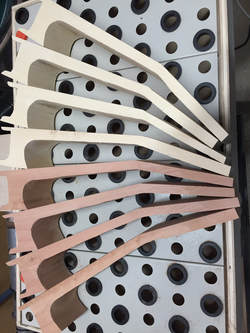
And I got the necks finished today. Eight nice tenor necks of Spanish Cedar and Alaska Yellow Cedar that will go on the shelf to save me a lot of time in a future build.
It is always fun to see how well you get the two glue joints in these necks done. If you sand the initial board perfectly smooth, keep track of the three separated pieces and the direction of their grain, you can make joints that are virtually invisible. Can you find the two joints in each of these necks?
